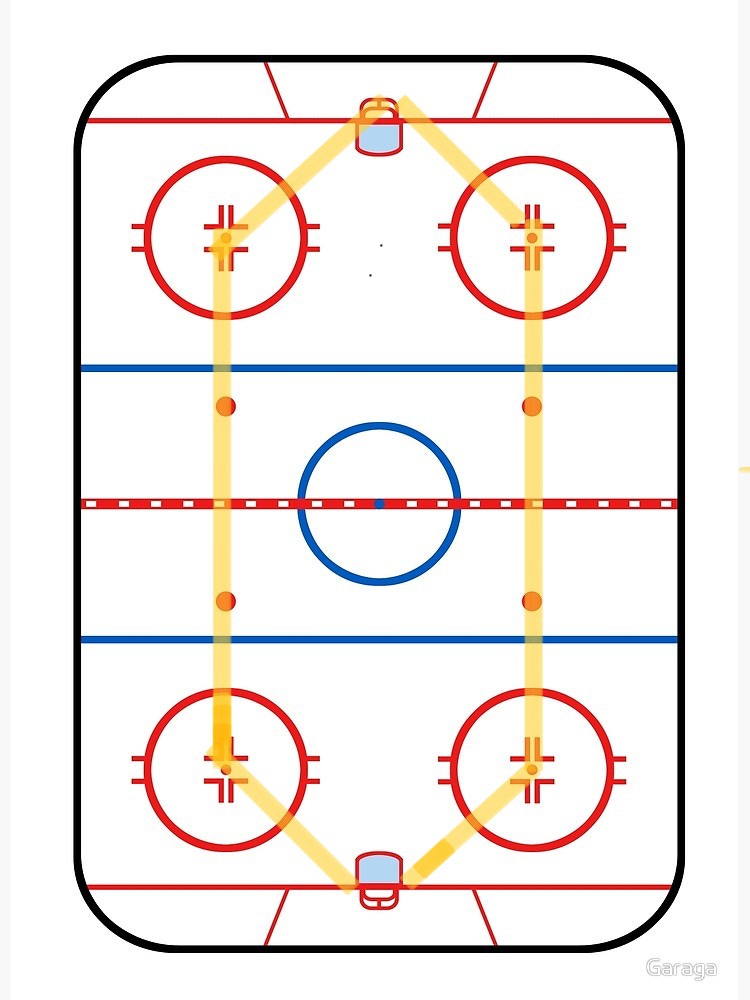Looking at more refined hockey tactics, you’ll soon come across the idea of using “middle ice” or “the dot lane/dot line”. Another phrase used as part of the tactic would be talking about “getting inside the dots.”
Related: Advanced rink Terminology
Here is a graphic looking at the “inside rink” using the dot lane/dot line as the guiding ice geography.
The dot lines are used as reference points for players.
Inside = high danger
Outside = low danger
For Defense
When teaching young defensemen how to play the rush, coaches will start by using the dots as a guide to where they should position themselves.
Then the next step is working to keep inside leverage to where the defender’s outside shoulder is matched up with the offensive player’s inside shoulder.
When recovering to defend a rush attack, players should be recovering and pivoting inside the dot line.
Even great defensive positioning and route for centers in the defensive zone use the dot line as a reference.
For Offense
On offense, getting off of the wall and into the dot line is a major advantage. By getting off the boards/wall, the offensive players allow themselves more options (left, right, and forward) compared to being along the wall (middle or forward). This also allows for great spacing between teammates.
We’ve covered in the past how centers should use the dot line as a reference point on the breakout. Going further, this can be used all the way up the ice.
Watch Connor McDavid follow the dot line all the way up the ice in the playoffs against the Kings. He uses the dot line as reference when skating with the puck and skating without the puck.
In the below video, watch how Troy Terry uses the dot line both for a zone exit and zone entry.
And this great play from Tomas Hertl leading to a goal:
When it comes to more refined and detailed hockey, players are using the dot line as a reference point.
Further Reading







